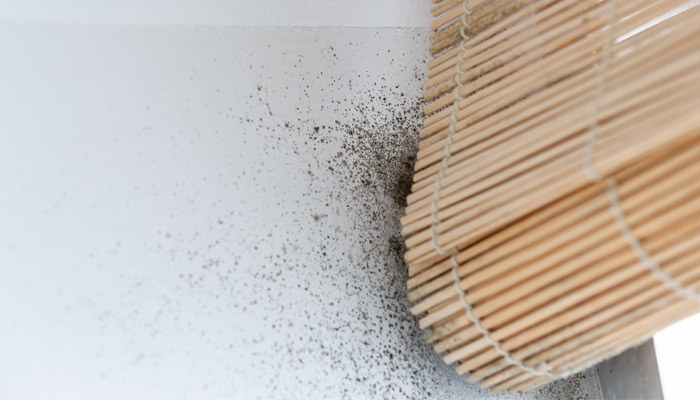Mould and mildew are not only unsightly but harmful. They can cause several health issues such as eye irritation, nasal congestion, chest tightness, throat irritation, cough and wheezing. The ideal habitat of these ‘unwanted guests’ is often window coverings like blinds and curtains, especially in homes with a moist environment. When sunlight come in through your windows and hits cold glass, it causes condensation to form on the inside of the window. When these are covered by blinds or curtains, they soak up that moisture which leads to the formation of mould and mildew.
Fortunately, you can get rid of those big, ugly patches. Want to learn how? Here are some tips.
Mould and Mildew on Window Coverings: Ways to Remove Them
Don’t let mould and mildew mar the beauty of your window coverings. Learn how to keep them off your curtains and blinds and prevent them from returning.
BLINDS
Dust Them with a Feather Duster
The first step to removing mould and mildew from blinds is to dust with a feather duster. This will remove any loose dirt or debris and make it easy to clean them further. However, make sure you wear a dust mask while doing so as dusting can make mould spores airborne.
Vacuum Them with an Upholstery Attachment
Once loose dirt and debris are removed, vacuum the blinds using an upholstery attachment. This will clear the edges, corners and hard-to-reach surfaces of the slats. Use warm water, all-purpose cleaner, soap and a sponge to clean visible moulds off the blinds.
Wipe the Slats with Water
Scrub all slats using clean water and a toothbrush and wipe with a rolled-up paper towel. Don’t make the mistake of rolling the blinds or mould and mildew can re-appear. It’s advisable to leave the blinds unrolled until the water dries.
Don’t Use Bleach
Some people use bleach on blinds to treat mould and mildew. However, bleach can have a corrosive and staining effect on window treatments, damaging them permanently. That said, bleach is not good at killing mould and mildew.
CURTAINS
Brush the Fabric with a Stiff-Bristled Brush
Brushing the curtain fabric with a stiff-bristled brush is the first step to removing some mould and mildew. This helps get rid of stubborn spots. You can also vacuum them instead of brushing, but you’ll need to throw out the vacuum bag afterward, since it will likely be contaminated by mould and mildew spores.
Machine Wash Your Curtains
If your curtains aren’t dry clean only, put them through a wash cycle on low (less than 30°C) to avoid shrinkage. Make sure you follow cleaning instructions. Try a citrus solution before cleaning for better results. All you need to do is saturate the affected area with lemon juice and cover with salt. Rub the solution with a soft cloth and then rinse before washing. But don’t forget to spot test before using this cleaning solution as lemon juice can cause a yellowish stain on some fabrics.
Hang Them to Air Dry
If stains remain after washing, they may require further cleaning. But before you proceed with further stain removal attempts, hang the curtains to air dry. Putting curtains through the dryer or blasting them with hot air will only make the stains harder to remove.
Take Them to a Specialist Dry Cleaner
When all attempts fail, take your curtains to a specialist dry cleaner. But inform the cleaner about mould and mildew so they use products that won’t worsen your problem.
| QUICK FACT |
| Mould can be many colours including white, orange and blue. The colour is related to the spores it produces. These could be as harmful as black moulds. |
PREVENTIVE MEASURES
Even if you’re able to free your window coverings from mould and mildew, it’s important to take preventive measures to stop these ugly spots from developing again. As mould and mildew in the home are usually caused by excessive dampness, here’s what you can do.
- Use a dehumidifier at regular intervals to remove excess humidity.
- Put silica gel near curtains and blinds to keep them dry.
- Keep the house well-ventilated by opening windows from time to time and allowing fresh air to circulate.
- Weather-strip windows to keep out cold air and reduce condensation.
- Minimize the sources of moisture in your home. Check plumbing for leaks, use lids on pots and pans when cooking, and avoid bringing wet clothes or shoes inside.
- Use exhaust fans in areas where water vapour is created like the kitchen and bathroom.
Development of mould or mildew on curtains and blinds is an indication that your window coverings need more frequent cleaning and that your home’s moisture level needs to be controlled. Don’t take these signs lightly or they could have a negative impact on your health. Follow the tips in this blog to get rid of those ugly spots and take preventive measures to keep them from coming back.

